If there was one city on our river cruise that totally surprised us, it was Novi Sad, Serbia. Tucked along the banks of the Danube River, the city greeted us with subtle heart motifs—symbols of welcome that echoed other places in the region.
You don’t always know what to expect when exploring places with complex pasts. Novi Sad was once part of the Austro-Hungarian Empire, later Yugoslavia, and now proudly stands as Serbia’s second-largest city and the capital of the autonomous Vojvodina region. It’s layered with cultural influences—Hungarian, Ottoman, Slavic, Austrian—and shaped by both beauty and hardship.

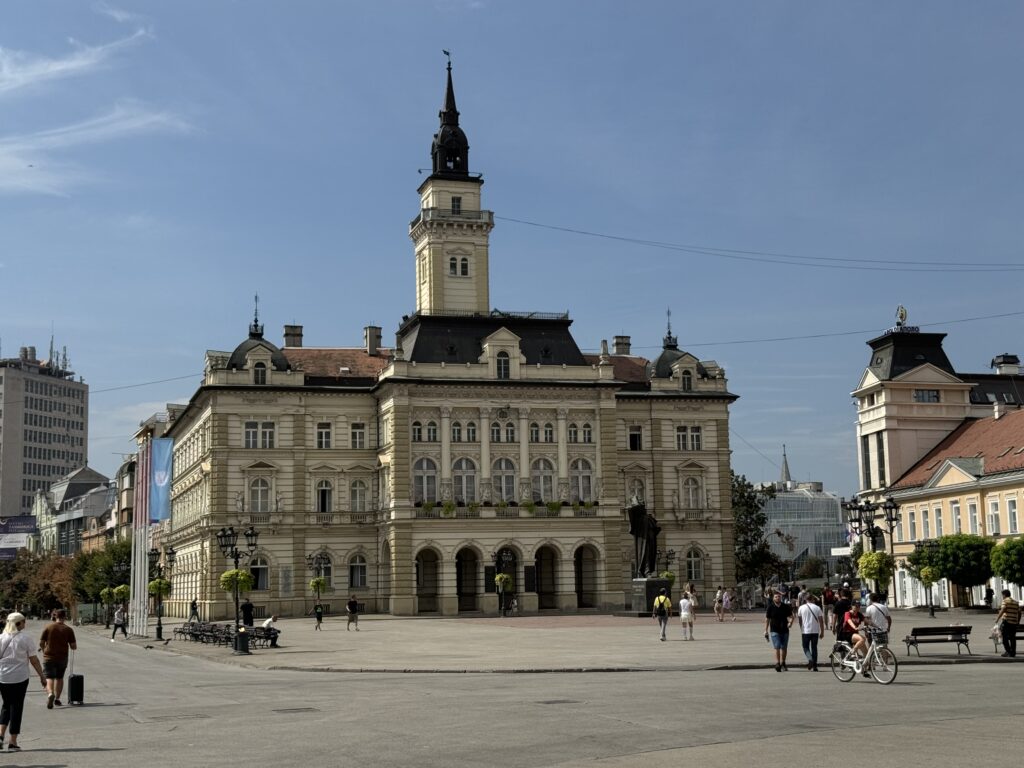
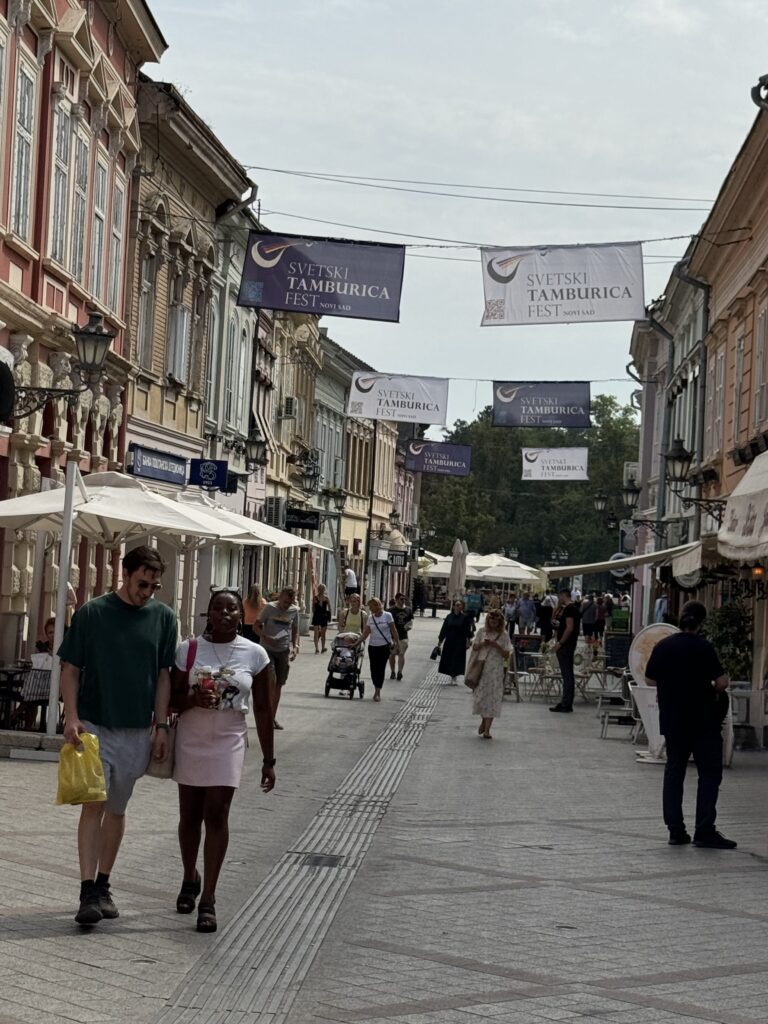
A Living City Full of Contrasts and Culture
There’s a wonderful contrast here. Novi Sad blends old and new in a way that feels effortless. Modern cafes and busy pedestrian streets share space with ornate Habsburg-era buildings and wrought-iron balconies. Stroll down Zmaj Jovina Street and you’ll pass families, students, and couples enjoying the day, while small shaded parks offer a quieter pace just steps away.


Danube Park, in the heart of the city, is one of those peaceful escapes. Covering about 50 acres, it’s home to walking paths, a small lake, and a variety of plants—some quite rare. Locals come here to relax, and cultural events make it more of a community hub.
Novi Sad also has a thriving cultural scene. The city hosts several institutions dedicated to the arts, including the National Theatre, operating since 1861. Galleries, museums, and a rich literary tradition make Novi Sad a magnet for artists and enthusiasts. This blend of history and creativity sets the tone for the city’s unique character.
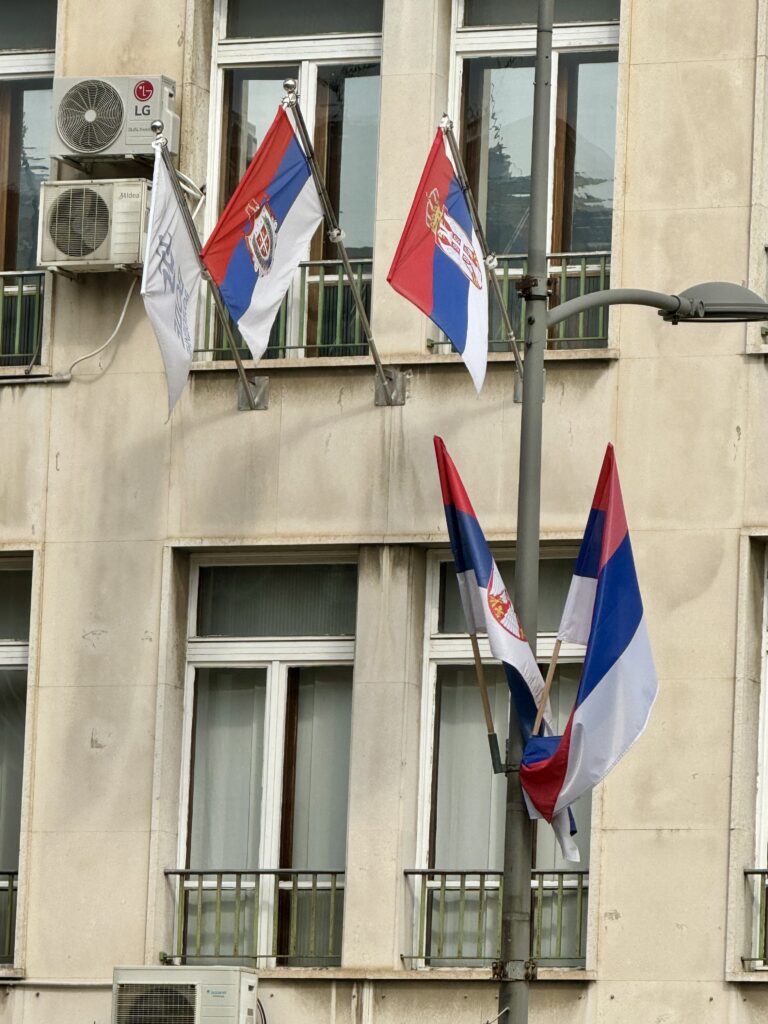


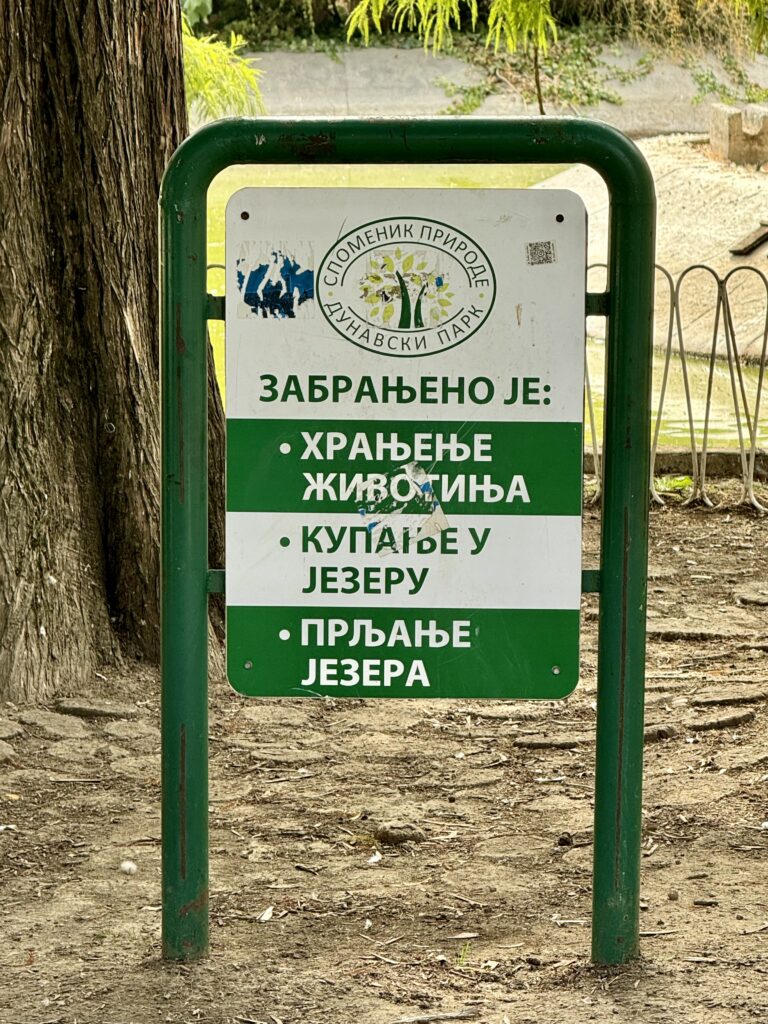
Traces of the Past: Novi Sad Remembers
Close to the centre centre, we passed Serbian navy boats docked along the river—a quiet but powerful reminder of the country’s recent past, including the NATO bombings of 1999 and years under Communist rule. The past is still visible—marks of bullets and shrapnel on older buildings quietly speak of resilience. But Novi Sad doesn’t live in the past; it is alive and thriving.
One detail that caught our attention was a unique architectural style of certain windows. Some had protruding glass panes at the bottom, angled so that people could discreetly see the street without being seen. These were especially popular during Communist times, but they also served a lighter purpose—keeping up with neighborhood gossip. It’s a small but fascinating glimpse into social history.
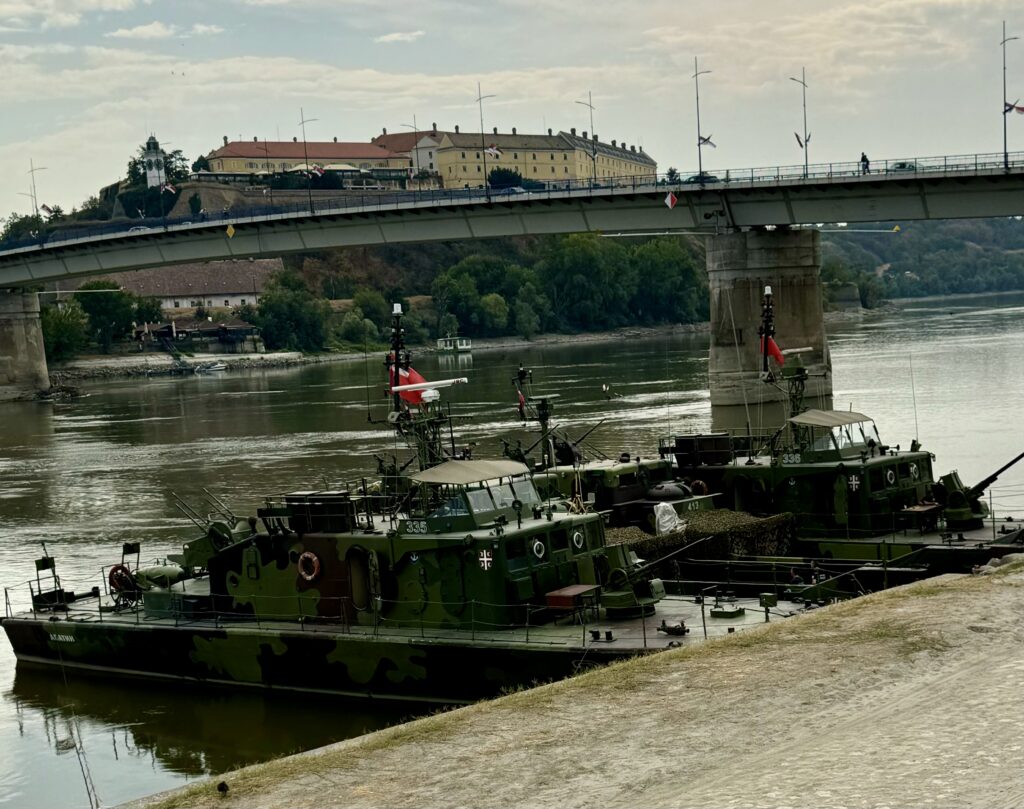
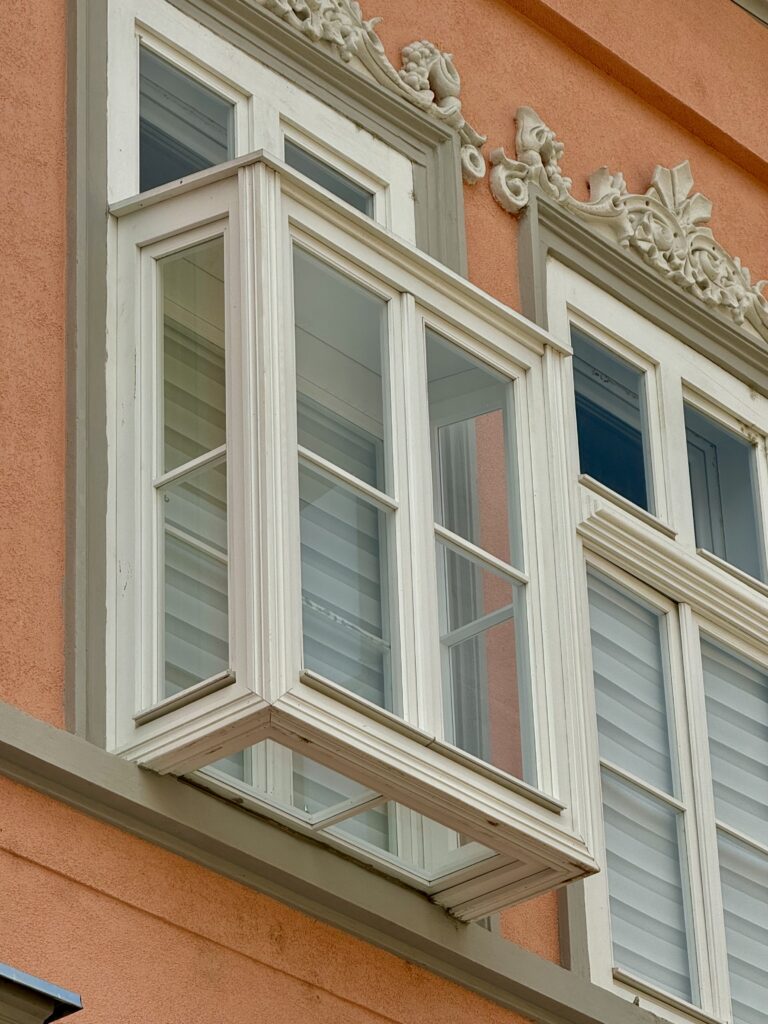
A Market Adventure—Serbian Style
One of the most fun experiences we had in Novi Sad was visiting a local market. Our guide turned grocery shopping into an ‘Amazing Race’ style challenge: we were each handed a small amount of Serbian dinars, a photo of a food item, and its name in Serbian Cyrillic. Our mission? Find the item, use the Serbian word to ask for it, and be the first to return to the group.
It sounded simple until we had to pronounce words like “краставац” (cucumber) or “шљива” (plum). The vendors were friendly and patient, often laughing with us as we stumbled through the language. It was a lighthearted way to connect with everyday life here—and it made grocery shopping surprisingly fun.
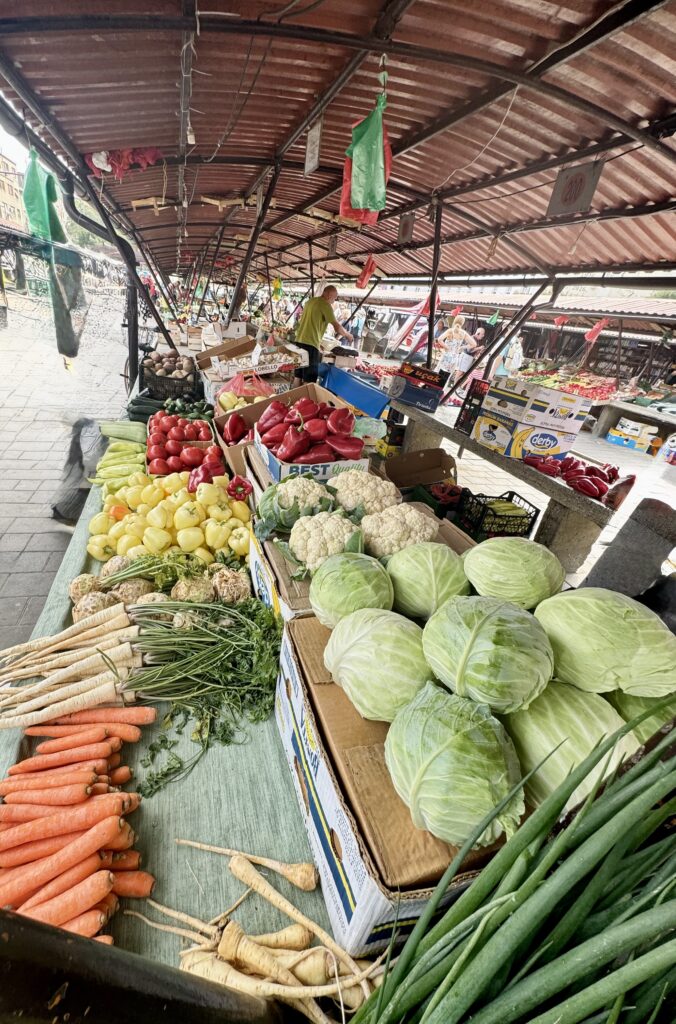
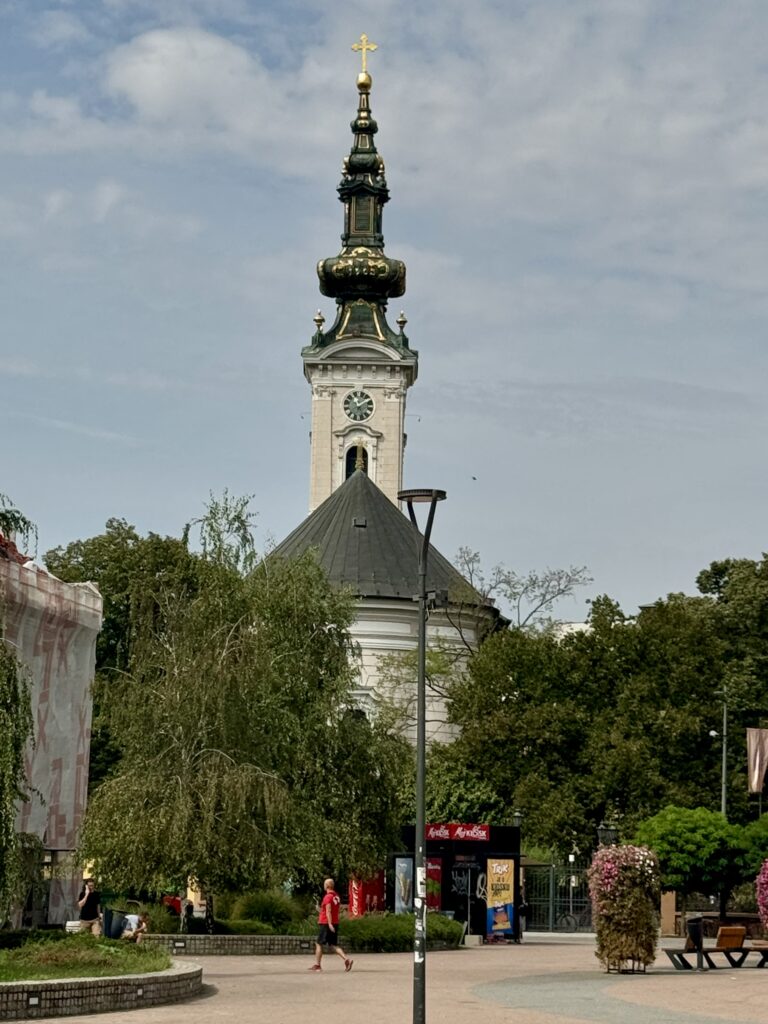
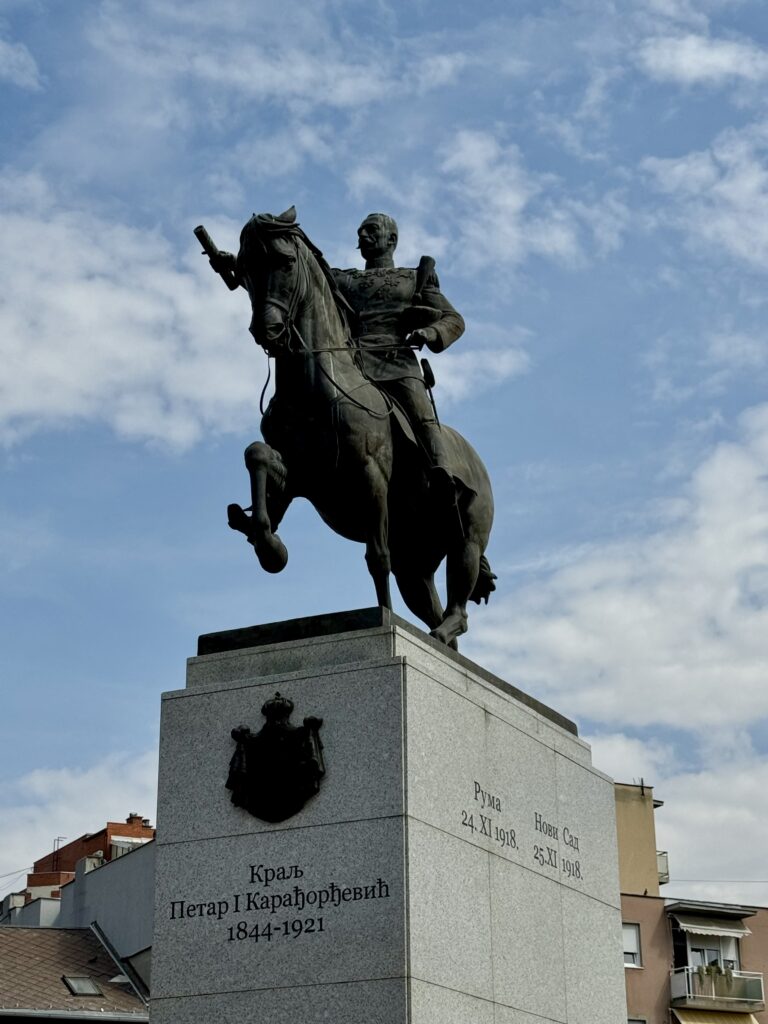
Statues, Stories, and the Spirit of Novi Sad
Novi Sad is full of statues, each with its own backstory. Poets, revolutionaries, and local legends are honored in small squares, near churches, or tucked alongside buildings.
The main gathering place is Trg Slobode (Liberty Square), framed by the striking Name of Mary Church and the City Hall. It’s a perfect place to stop for coffee and watch a different world go by.

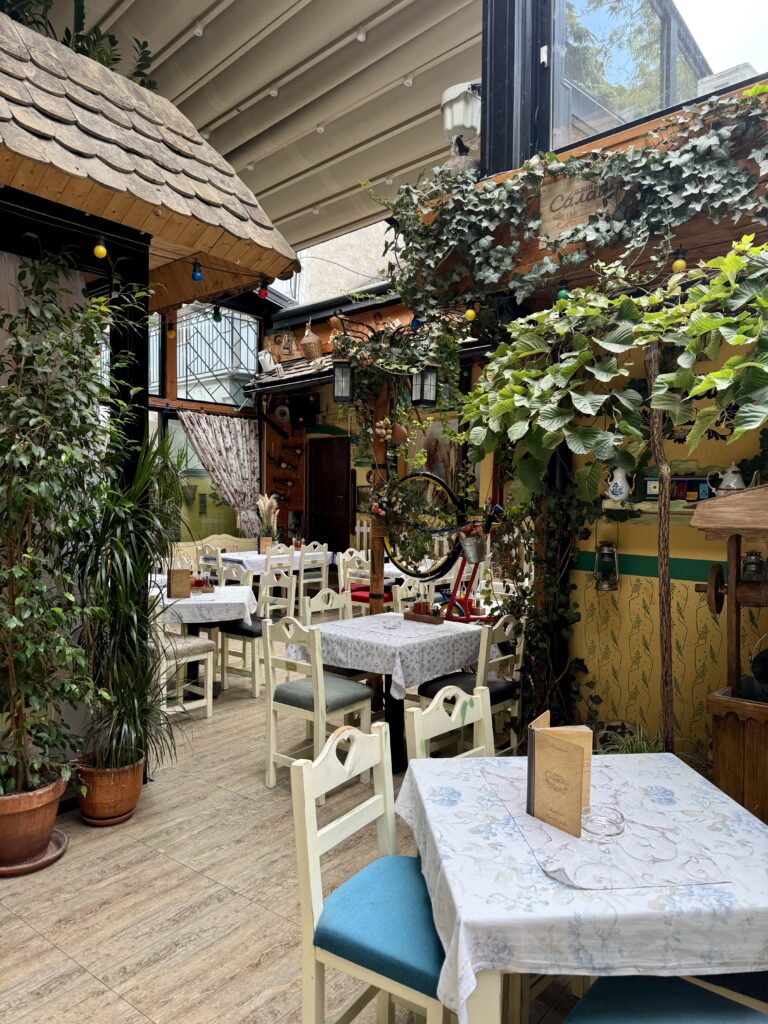
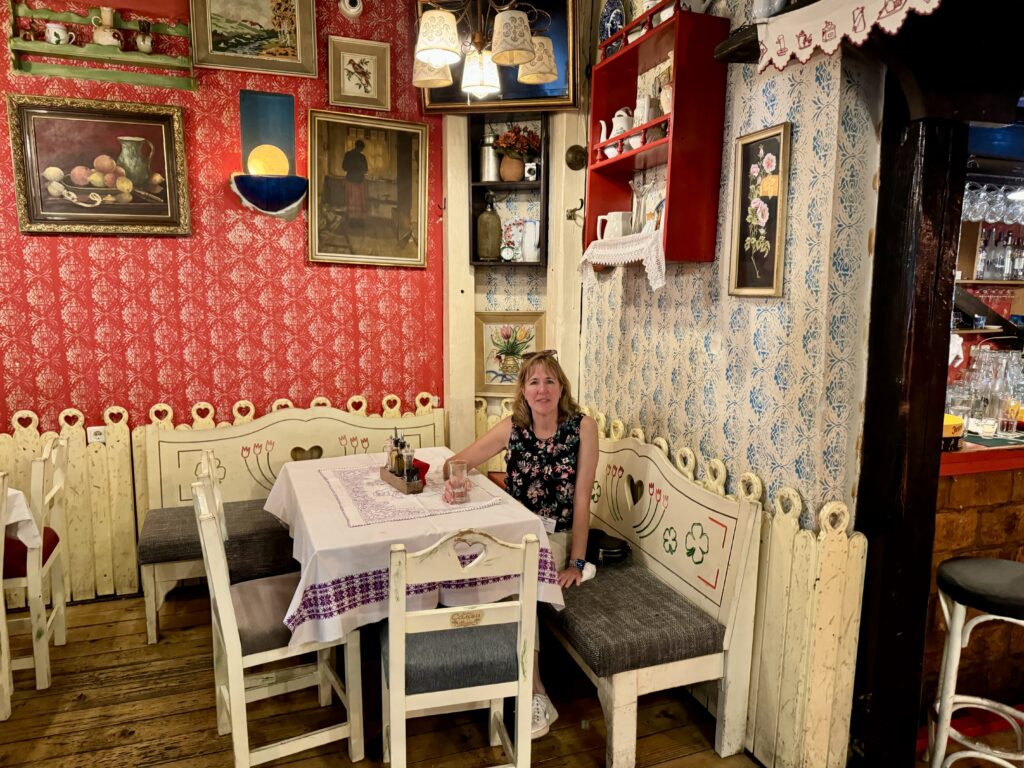
We stopped for lunch at a small, traditional Serbian restaurant tucked down a quiet street. The menu was indecipherable to us, but our meal was excellent. It began, as many Serbian meals do, with a shot of Rakija—brandy meant to cleanse the palate (more like lighter fluid than liqueur!). We had a grilled meat dish, similar to kofta, served with onions, roasted vegetables, and crispy French fries. Dessert was a light pear cake—simple and satisfying.
Across the Danube to Petrovaradin
One highlight of our visit was a walk across the Danube via the Liberty Bridge, also known as the Bridge of Freedom. Opened in 1981, the bridge links Novi Sad to Petrovaradin, but it’s also a popular photography spot with the bonus of sweeping views of the Danube. At night, it’s beautifully lit.
Our walk ended with an uphill climb through a tunnel, leading us to the Petrovaradin Fortress, sometimes called the “Gibraltar on the Danube.” Built in the 17th century, the fortress offers panoramic views, houses the Novi Sad City Museum, a network of underground tunnels, and several artist studios. One quirky highlight is the clock tower—its hands are reversed, with the hour hand longer than the minute hand so that fishermen on the river could easily read the time. (The minutes weren’t as important as the hour!)
Near the railings, we found locks left by couples as tokens of love. In the trees, a whimsical art installation—a pair of cut-out glasses and strategic tree placement—which creates the illusion of a face when viewed just right. It’s unexpected, clever, and very Novi Sad. Most of all we were impressed with the views from the fort.


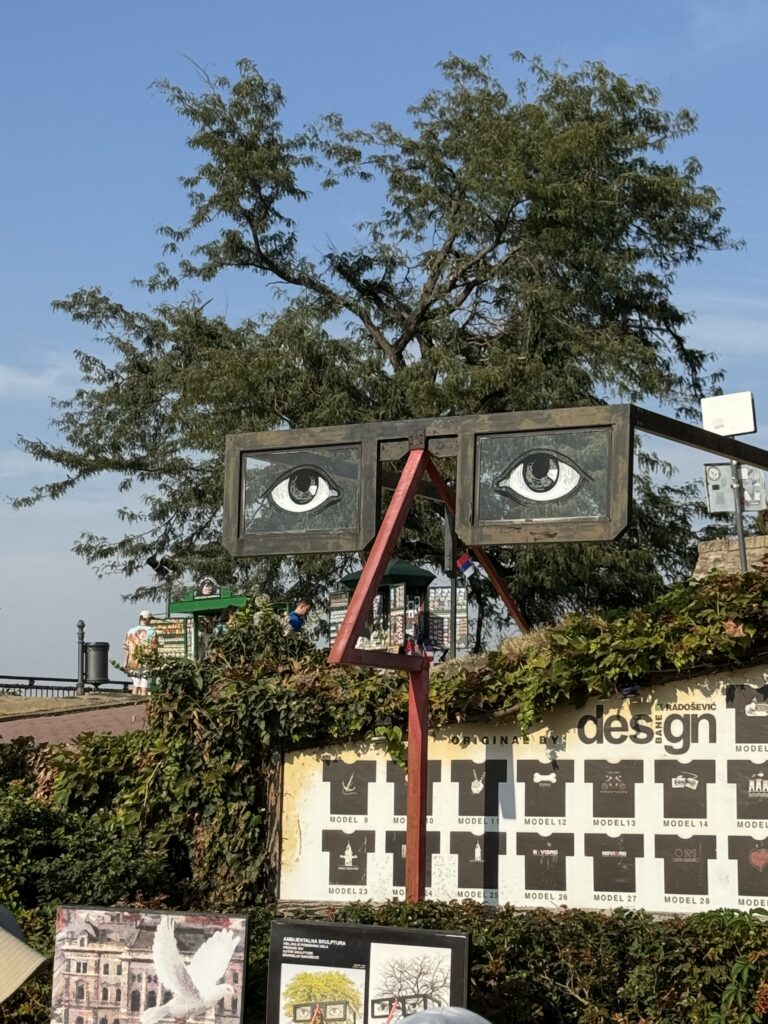
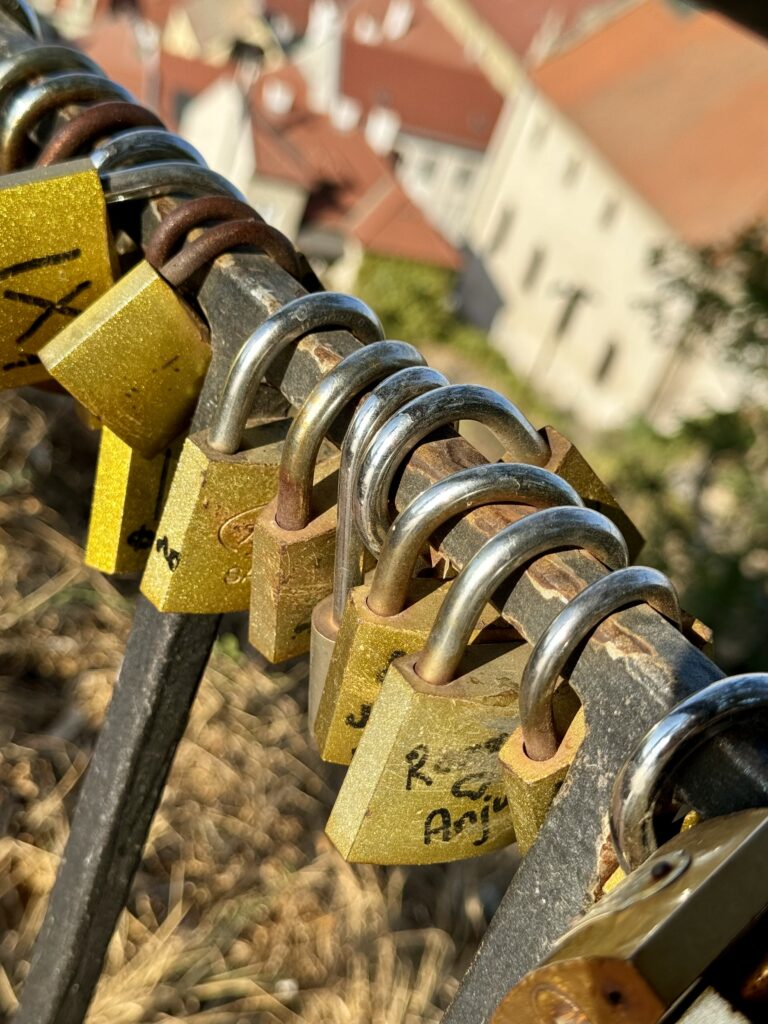
Novi Sad After Dark
Since our ship wasn’t leaving until midnight, we took the chance to explore Novi Sad after dinner. Wandering the quiet streets with new friends, we enjoyed a late-night dessert and the relaxed local vibe. The city felt even more alive in the evening—children playing, couples strolling, and music drifting softly from open windows.
The warm lamplight added to the calm, welcoming atmosphere, making it feel safe and unhurried.
Fun fact: We were the only six people who left the ship that night and returned around 11:15—well before the midnight deadline. However, the crew was already looking for us because they’d decided to leave early. The ship pulled away just five minutes after we got back. Everyone was polite and even laughed about it, but it definitely made for an interesting moment.

Why We’d Go Back
Before this trip, Novi Sad wasn’t even on our radar. Its name means “New Plantation,” and its beginnings were modest. Today, it’s a city that has managed to grow and modernize without losing its sense of community.
It honors its past but doesn’t cling to it. From the parks and historic architecture to the growing arts and tech scenes, Novi Sad has depth without trying to dazzle. That balance is part of its charm.
Named a European Capital of Culture in 2022, Novi Sad lives up to the recognition. It’s warm and unpretentious, with more to discover than you might expect. If given the chance, we’d gladly go back.
See also: Budapest Revisited: A Wonderful Beginning
Vukovar, Croatia: A Quiet & Powerful Strength
Discovering Novi Sad: Serbia’s Unexpected Charm (This Post)
Belgrade, Serbia – A City of Complex History
Golubac Fortress and Lepenski Vir – A Day in Northern Serbia
The Iron Gate Gorge: From Decebalus to Danube Locks
Viden, Bulgaria: Roses, History and Symphony
Belogradchik Fortress: Bulgaria’s Hidden Gem in the Balkan Mountains

